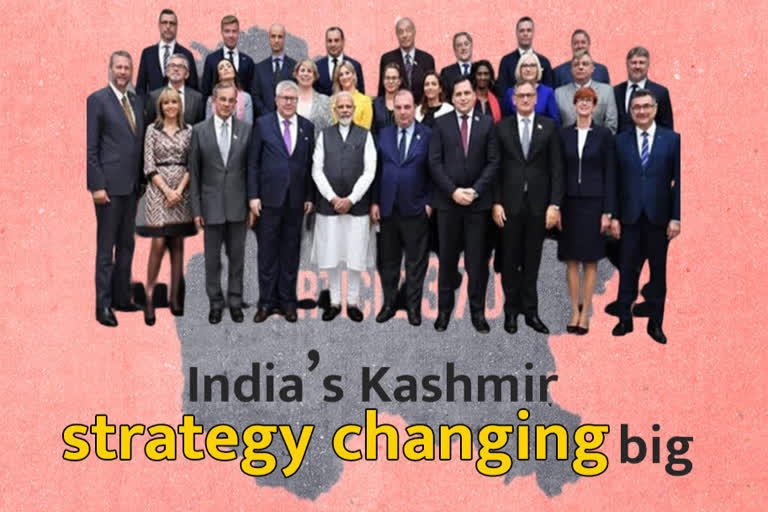Hyderabad: The big three had already spoken after August 5, 2019—the day Article 370 was abrogated in Jammu and Kashmir. Home Minister Amit Shah, Defence Minister Rajnath Singh and Foreign Minister S Jaishankar have all uttered in precise tandem that Pakistan-occupied Kashmir (PoK) belongs to India as does Aksai Chin in Ladakh.
And then a week ago, it was Army chief General Bipin Rawat during the Carriappa lecture at the Maneckshaw Centre in the national capital.
This repeated reiteration underlines a planned and paradigmatic change in India’s foreign policy by demolishing the conventional understanding and traditional Indian position of Kashmir being a bilateral issue.
While the traditional Pakistan position has been focused on internationalizing Kashmir, by drawing attention to PoK—which comprises ‘Azad Kashmir’ and Gilgit-Baltistan, India is merely stating that the dispute lies not just here but on the other side of the Line of Control (LoC) too.
At its core, it raises the question of the Pakistan Army’s occupation of PoK. And also pointing out that is where the global searchlights need to be It can be construed as a conscious Indian effort to internationalise the Kashmir issue which the South Block mandarins think will be of benefit.
Tuesday’s (October 29) unprecedented visit of a European Union Parliament delegation to Srinagar is in fact an exemplification of that policy.
By doing so, Pakistan is being pushed into a corner to defend its part in PoK. A position it may not be comfortable with because of the massive China Pakistan Economic Corridor (CPEC)—an ambitious plan comprising highways, railways and infrastructure projects which run from Kashgar in China to Pakistan's Gwadar on the Arabian sea coast. China has already invested more than USD 50 billion in this project till now. Interestingly, the project runs through PoK and hence draws in China too. It would also raise China’s doubts about an undisputed legal standing of such a project once global scrutiny is focused.
The latest Indian position also seeks global focus on China’s occupation of a certain stretch ceded to it by Pakistan under a 1963 pact.
On Thursday, Foreign Ministry spokesman Raveesh Kumar held it out more bluntly in yet another strategic positioning: “China continues to be in occupation of a large tract of area in the Union Territories of Jammu and Kashmir and Ladakh. It has also illegally occupied Indian territories from Pakistan-Occupied-Kashmir under the so-called China-Pakistan Boundary Agreement of 1963.”
“India has consistently conveyed its concerns to both China and Pakistan on the projects in so-called China-Pakistan-Economic Corridor which is in the territory that has been illegally occupied by Pakistan since 1947.” In no time in the recent past was Indian strategic positioning so bold and blunt on the issue. The ratcheting up of the issue at this point of time is interesting.
The traditional Kashmir policy was based on a belief that if Kashmir continues to be a bilateral issue, it benefits India. And accordingly, a supporting political architecture including a class of political elites was built around it which was also to further the position that a Muslim-majority Kashmir was a feather in the cap of Indian democracy and secularism.
The latest strategic change demolishes that and even questions the sanctity of the Line of Control. We continue to live in interesting times.
Read: J&K, Ladakh separate UTs from today; here's what changes



